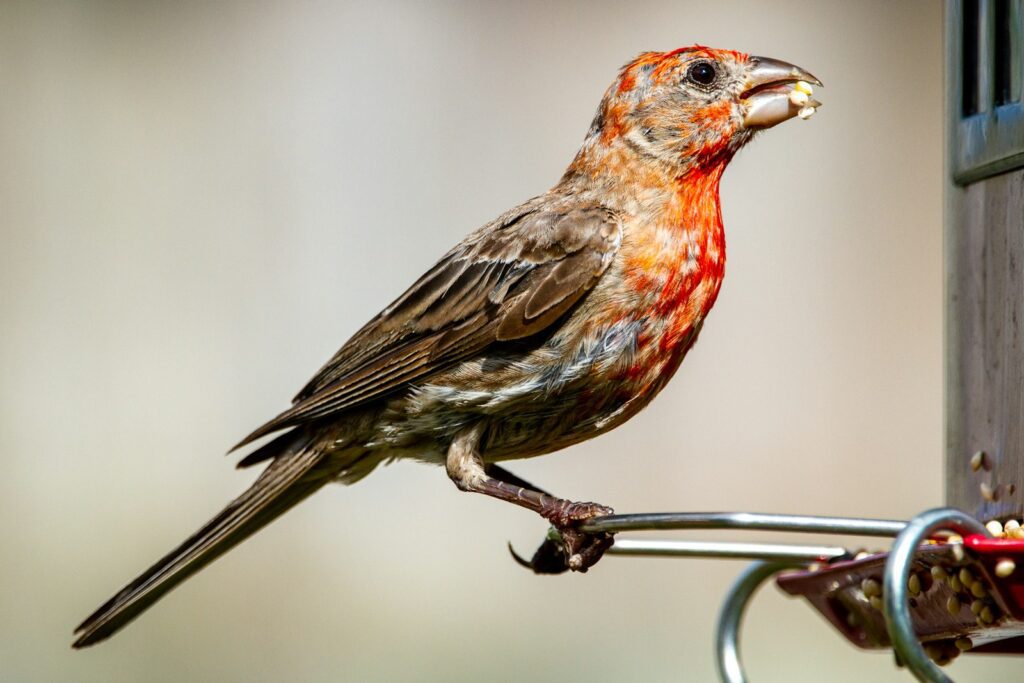A week ago, I wrote about some of the birds that frequent my bird feeder in the winter months. That would be the juncos, the cardinals, the blue jays and the woodpeckers. But that is certainly not all that visit.
One of the most common birds I see are the red finches. They are more common now in the eastern part of North America, having recently migrated from the west. The males sport cheerful red heads and breasts, however the ladies are not so endowed. They tend to congregate in groups and are common visitors to the bird feeder. They live in parks, yards and edges of the forest. They have chunky beaks allowing them to break open seeds and are often seen picking the shells away on the ground.

Occasionally I see nuthatches. I love to watch these little birds because they travel up and down the branch or feeder upside down. This is a small bird with almost no neck. It is blue gray on top with a white face and belly. When I look at this bird, my first impression is that it has a tuxedo on. These birds are found in deciduous woods. They wedge large nuts into the bark of trees and then strike at the nuts with their long bills to break them open.
As winter wears down, I begin to see goldfinches arrive at the feeder. The males in the springtime are vibrantly yellow with a vivid black forehead and wings with white markings. What lady finch wouldn’t be attracted? You often see them in groups on the ground around the feeder. They are so bright, it is easy to spot them in flight. The goldfinches love fields and gardens where there are lots of thistles and seed pods. This is why I never cut my flowers down until the spring. The finches love the seeds in the dead flower heads.
Another tiny bird that I enjoy is the tufted titmouse. I just love saying its name. This is a small gray bird with a tuft or crest on its head. Its belly is white with a little rust under the wings. They frequent deciduous and evergreen forests and you often see them around bird feeders. These birds have big heads and are round. They often travel with chickadees and finches.

My list wouldn’t be complete without mentioning the many doves that flock to the ground beneath the feeder. The mourning dove has a plump body and a small head that looks out of proportion to its body. They are well camouflaged for their habitat. They are brown to light tan with black spots on their wings. Their range is almost everywhere except the deep forest. You will often see them perched on telephone wires or on patches of bare ground. They love to forage for seeds under the feeder. They got their name “mourning” dove from the sad cry that they make as they fly.
I also see chickadees, wrens and sparrows. I’m not sure what kind of sparrow I’m seeing because they all look very similar to me. I’ll get out my binoculars the next time I see one and see if I can pin down which one it is.
These are the main types of birds I see in the winter. I’m grateful to each one of them for lifting my spirits on gray winter days.

Leave a Reply
You must be logged in to post a comment.